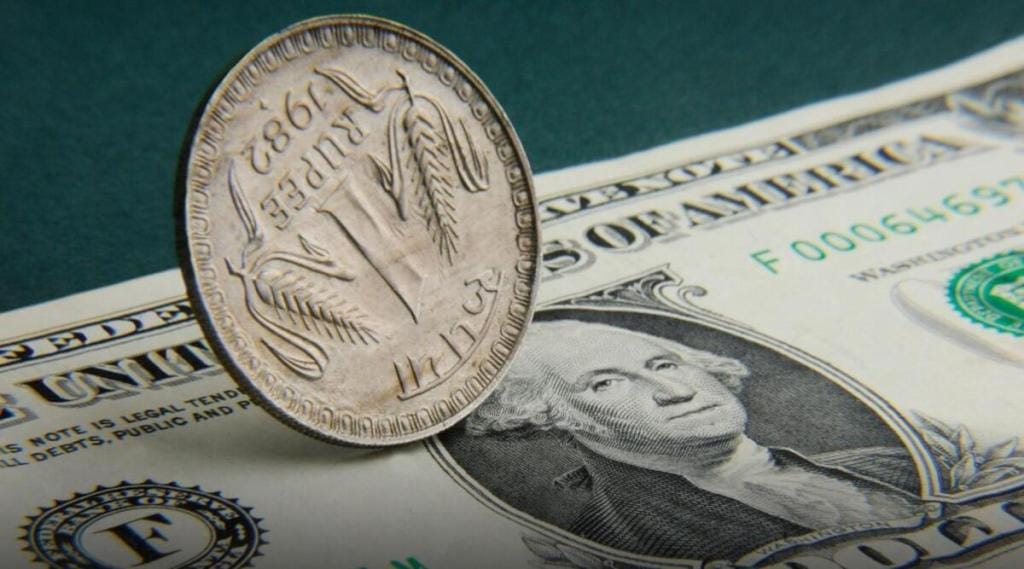The Indian Rupee on Tuesday pared its initial gains and settled 17 paise lower against the U.S. dollar on the back of higher-than-expected borrowing in the coming financial year. Investors were wary after FM Nirmala Sitharaman on Tuesday said that government will borrow about Rs 11.6 lakh crore from the market in 2022-23 to meet its expenditure requirement. At the interbank foreign exchange, the rupee opened at 74.53 against the American dollar, witnessed an intra-day high of 74.41 and a low of 74.87 before ending the day at 74.82, 17 paise lower than previous close of 74.65.
The rupee is likely to continue its depreciation today on the back of elevated crude oil prices. Further, investors will anxiously wait for the outcome of an Opec meeting. However, downsides may be cushioned on weakness in the dollar index. US$INR (February) is expected to rise further towards 75.50 for the day, according to ICICI Direct.
Heena Naik, Research Analyst, Currency, Angel One Ltd
In today’s session, Rupee is expected to resume its normal trading and move in the positive direction towards 74.40 levels. Reason for the same could be attributed to the bearish trend seen in the American currency which has moved down south after some US Fed officials indicated that rate hikes were data dependent. Apparently, the San Francisco Fed President stated that the officials “definitely are poised for a March increase,” but after that she would like to see the data. Also, the Richmond Fed President Thomas Barkin said that the pace of moving to a neutral position on interest rates depended on the pace of inflation. On the other hand, the Atlanta Fed President Raphael Bostic said that policymakers were not set on a particular trajectory.”
“These comments have come in after several market participants have revised their estimates on the number of rate hikes in the US this year thereby wrongly affecting the US Dollar Index. Fall in the US Dollar Index is likely to benefit other currencies including Indian Rupee. Keeping all the factors in mind, USDINR is likely to make a gap up opening today but quickly move towards 74.40 levels”.
Gaurang Somaiyaa, Forex & Bullion Analyst, Motilal Oswal Financial Services
“Rupee rose in the first half of Tuesday’s session but volatility remained low ahead of the important Union Budget that was announced yesterday. The country’s fiscal deficit settled at 6.9% of the GDP in 2021-22 and will be targeted at 6.4% in the upcoming fiscal, the FM said in her budget speech.The finance minister pegged the government’s fiscal deficit for the financial year 2022-23 at 6.4% of GDP. The Budget for 2021-22 pegged the fiscal deficit for the full year at Rs 15.07 lakh crore, or 6.8% of GDP, which has been revised to 6.9%. Rupee was weighed down post the announcement of the Union budget and focus will now shift to the RBI policy statement that will be released later next week.”
“From the US, focus was on the manufacturing PMI number, data showed manufacturing activity fell to a 14-month low in January amid an outbreak of COVID-19 cases, supporting the view that economic growth lost steam at the start of the year. The economy hit a soft patch in December which appeared to have persisted in early 2022 as coronavirus infections, driven by the Omicron variant, surged across the country. Today, from the US, market participants will be keeping an eye on the private payrolls number and better-than-expected data could extend gains for the dollar. We expect the USDINR(Spot) to trade with a positive bias and quote in the range of 74.70 and 75.25.”
USDINR appears to be rangebound: Kotak Securities
“Union Budgets of the current government has been high on intent and quality of expenditure and low on populist measures. This Budget was no different. Rightly so, GOI continued to focus on growth via high capital expenditure and supply side reforms. Capital expenditure is expected to rise by 24% in FY23, after a sharp jump of 27% and 41% during FY21 & FY22. Government understands well that another year of heavy lifting needs to be done to crowd in private investments. At the same time focus has been on augmenting infrastructure for industries and easier tax compliance.”
“Focus has also been on incentivizing localization of manufacturing via PLI schemes, better import duty structure and new SEZ policy. The Budget is a continuing effort to improve the productive capacity of the nation and which is a medium to long term positive. Though equity market cheered the Budget but it was Rupee and bond prices which sulked. High net borrowing and no amendment to withholding tax for FPIs pushed yields higher. The curve steepened as market priced in higher borrowing and growing inflation risk. Though yields have room to rise over the near term but USDINR appears to be rangebound. The broad range is now 74.50 and 75.25/75.50 on Feb futures.”


